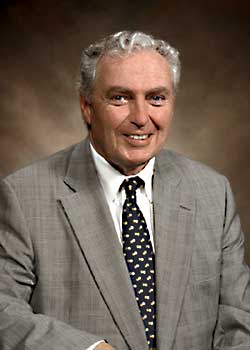Page content
Message from the President
Places at the Table

In the Colonial Williamsburg Foundation's archives now rests a five-page letter dashed off late one night on the gray-blue linen stationery of a New York hotel in 1928. It came from the hand of the Reverend Dr. W. A. R. Goodwin, and it told Miss Elizabeth Hayes, his secretary in Williamsburg, about that evening's meeting of John D. Rockefeller Jr.'s associates and advisors. In the course of that dinner conference-they got together at the Racquet Club-the world's leading, and perhaps most self-effacing, philanthropist had at last consented to the disclosure of his connection to Williamsburg's restoration. The announcement, to be made at a town meeting, would crown the realization of Dr. Goodwin's dream-to see the fast-fading eighteenth-century village returned to its colonial charm and history. Back in his rooms at the Vanderbilt, the rector of Bruton Parish Church, almost beside himself with excitement, sat down to send the news to Miss Hayes, his only staff and chief collaborator during the project's first few, "quiet-phase" years. He so wanted to share with her the moment that he sketched the conference table and jotted around it the names of the participants . . . Mr. Heydt, Colonel Woods, Mr. Debevoise, Mr. Chorley . . .
It was at another conference table, the long mahogany one in the Goodwin Building boardroom, that this spring I first perused that letter. Its pages were among a dozen or so items in an exhibit exemplifying the gift of Dr. Goodwin's private papers to the Foundation. Almost three-quarters of a century later, the joy and enthusiasm captured in the quick strokes of his fountain pen still jump from the page. Dr. Goodwin might well have used one of his favorite words, "gladness," to describe his feelings that night, and it is a fair word to describe how I felt about this occasion.
We were assembled, at the beginning of the celebration of Colonial Williamsburg's 75th anniversary, to thank Howard and Alice Goodwin for a remarkable and very timely gift. The documents-and there are thousands-begin in the 1870s with Dr. Goodwin's rural Virginia youth and end with the manuscript of the book he was writing about the restoration at his death in 1939. There are photographs, diplomas, telegrams, letters, monographs, sermons, and more-even an autobiography. They are, quite tangibly, fragments of the past. They tell a story that holds special meaning for all of us who admire what Dr. Goodwin accomplished with his life and who are wonderfully fortunate to share his extraordinary legacy.
Howard Goodwin, now 82 and Dr. Goodwin's last surviving child, is almost the image of his father and sounds a lot like him, too. There is, as well, a certain resemblance in their generosity of spirit. Howard Goodwin's contribution to the Foundation, which is, of course, irreplaceable, was that day in March the newest entry in the record of benefactions from the millions of Colonial Williamsburg patrons and admirers who have so long sustained the institution his father and Mr. Rockefeller presented to our nation.
In September, the Foundation plans to end the quiet phase of its first comprehensive campaign and publicly announce exciting new opportunities for Colonial Williamsburg's friends to carry forward its work. In that respect, I feel a certain kinship with a certain Williamsburg minister as he prepared for that long-ago town meeting.
The gifts of all of us who share something of Dr. Goodwin's and Mr. Rockefeller's sense of gladness and of benevolence, as well as their optimism and their faith in America's future, are as central to Colonial Williamsburg's success today and tomorrow as they have been to its yesterdays. There are places for us all around the table. Your enthusiasm for the restoration these two visionary Americans began seventy-five years ago inspire all of us privileged, day-by-day, to follow their dreams in so extraordinary a place as this. Most importantly, your generosity, like the generosity of all who have gone before us, advances the hope we hold in common: "That the future may learn from the past."

Colin G. Campbell
President
